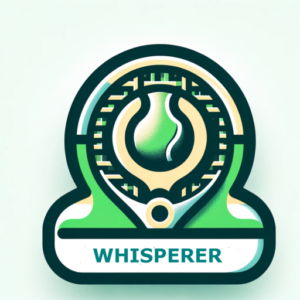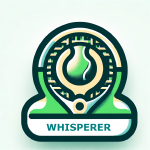The Silent Match-Loser in Badge: Unforced Errors
The Silent Match-Loser in Badge: Unforced Errors
I still remember, as a kid learning tennis, going up against “the puddler” — that maddening opponent who never seemed to do anything but float the ball back to the middle of the court. Point after point, I’d try to blast my way through, only to miss and gift them another point. I was small, without the weapons to finish a point, clueless about court positioning, and far too impatient to play the long game. My young mind couldn’t wrap itself around one simple, infuriating question: how could you possibly lose to someone who never attacked?
The answer, of course, was simple: unforced errors.
What They Are — And Why They Matter
An unforced error is a mistake entirely within your control — no brilliant winner from your opponent, no impossible retrieval. Just a shot you should have made, but didn’t.
While the frequency of these errors generally decreases as standards rise, they never vanish. Even in Badge tennis, they are often the biggest deciding factor in a match.
Some are more painful than others. Failing to return a weak second serve — particularly in doubles, and especially when you dump the return into the net — is a serial offender. Other classic examples include:
-
Missing a routine volley with the court wide open
-
Overhitting an approach shot with no real pressure on the swing
-
Netting a slow sitter in the middle of the court
-
Double-faulting on a crucial point
-
Sailing a ball long when you had time to set up perfectly
The sting isn’t just in losing the point — it’s in knowing the outcome was entirely in your hands.
The Numbers Don’t Lie
Roughly 30% of professional tennis points end with an unforced error. The best in history keep their rates unusually low:
-
Bjorn Borg → 4.9%
-
Rafael Nadal → 5.4%
-
Roger Federer → 8.2%
By comparison, the average Sydney Badge player will often see 35–45% of points end in a UFE — and in scrappy, high-pressure matches (especially against “puddlers”), that number can surge past 50%.
At Badge level, matches are often decided not by who hits the most winners, but by who can hand over the fewest free points.
Why It’s a Match-Changer in Badge
At pro level, shaving 5% off your UFE rate can swing a match. In Badge, where UFE counts are often much higher, the impact is even bigger. If you normally give away 40% of points through UFEs and you can bring that down to 30%, you’ll win far more matches — without improving a single other aspect of your game.
The Psychology of Control
Reducing unforced errors in Badge isn’t about playing “safe” tennis — it’s about disciplined execution under pressure:
-
Balance — hold posture through your shot so the ball stays on target
-
Footwork — small, precise prep steps to arrive balanced
-
Mental resets — breathing, self-talk, and rituals to stop one mistake becoming three
-
Training habits — making consistency automatic through repetition
Why UFEs in Doubles Can Be Easier to Manage
In doubles, you start in a winning position — right at the net. That positioning forces errors from your opponents and gives you high-percentage volleys to finish points quickly. Because rallies are shorter, there’s less time for UFEs to creep in — but the same rule applies: the team that gives away fewer free points almost always wins.
So how do you handle it when your partner makes a UFE? Nobody deliberately misses a shot, so be sympathetic — especially if they were doing the right thing tactically. In those moments, your role is to be encouraging, not critical. Remember, even a strong doubles team will still win only about 60% of points they play, so the occasional miss is not just inevitable — it’s part of the game. A quick nod, a smile, or a “good look” can keep your team’s confidence rolling into the next point.
How to Start Winning the UFE Battle
-
Track your mistakes — chart your UFEs in matches and notice patterns.
-
Consistency — aim for 50+ rally balls deep-to-deep groundies and volleys without an error in practice
-
Simulate match pressure — assign penalties for UFEs in practice sets. You lose 3 points when you hit the ball into the net.
-
Have a reset plan — deep breath, ritual, and a tactical target after every error.
Whisperer Tip:
In Badge tennis, you don’t have to be the biggest hitter to win — but you do have to be the one who gives away fewer free points. Control what you can control, and you’ll control the match.



